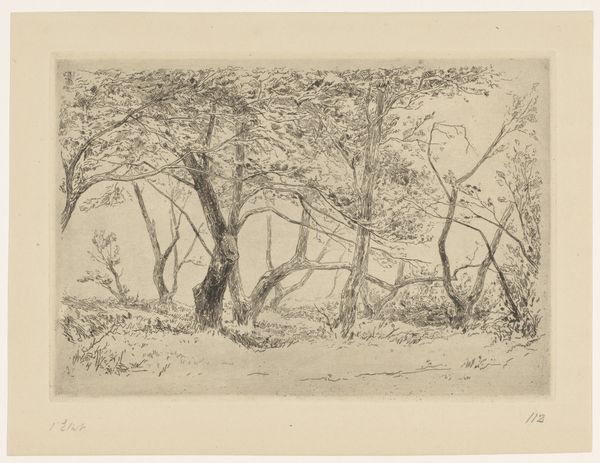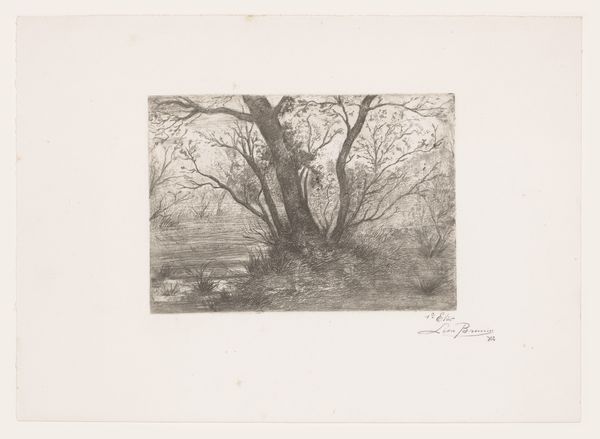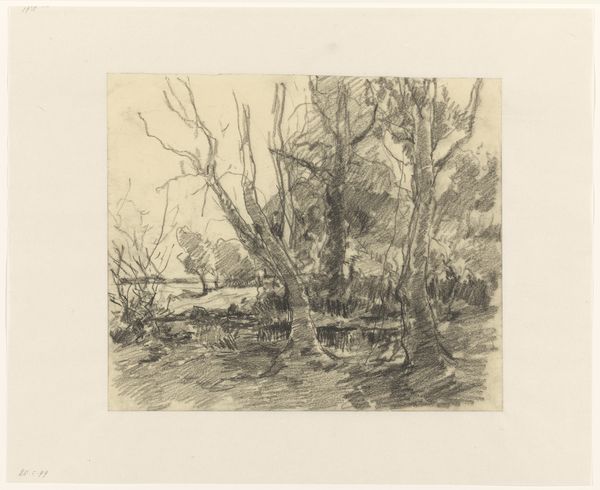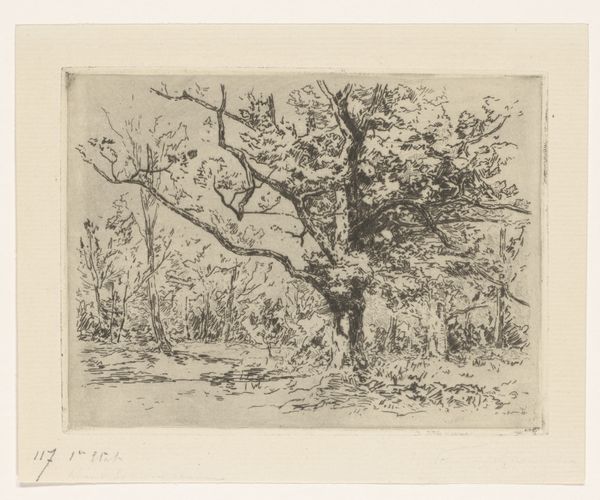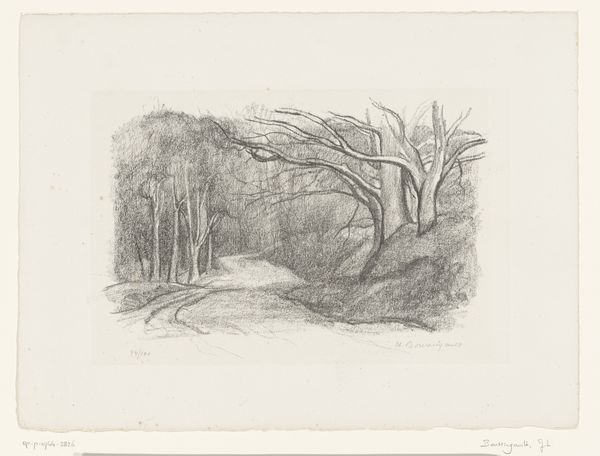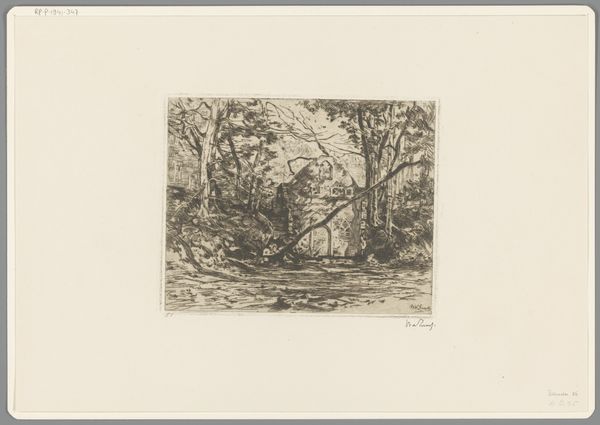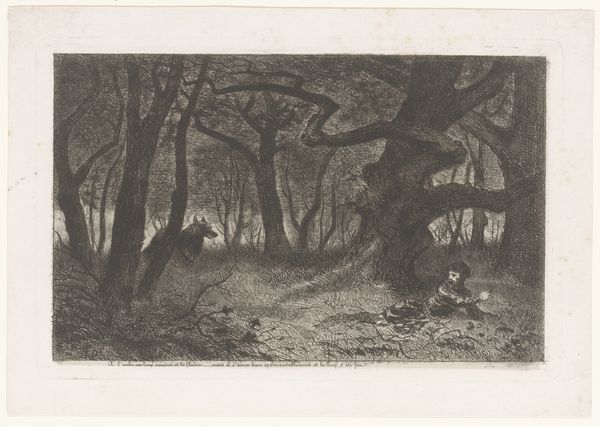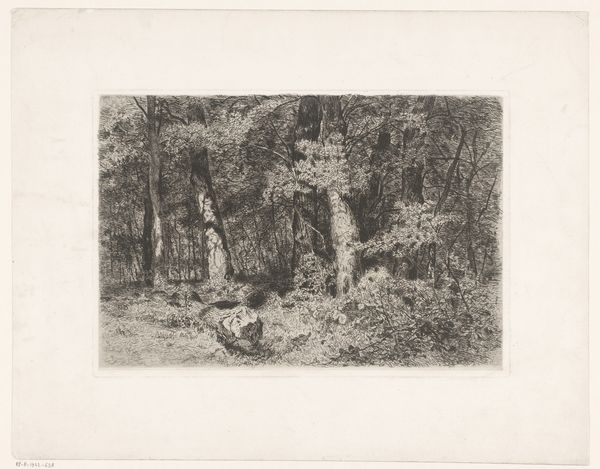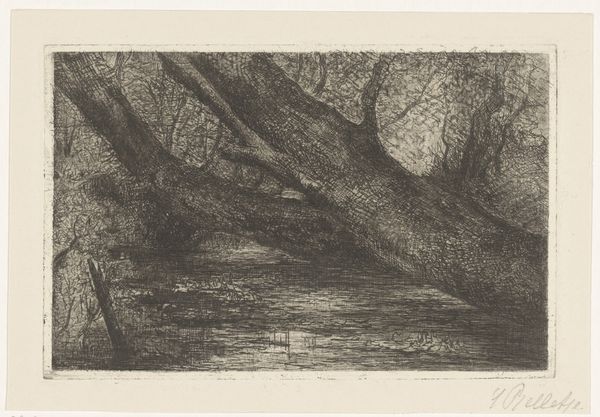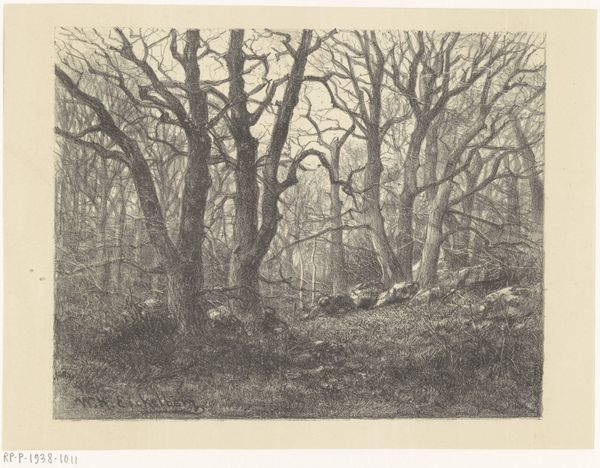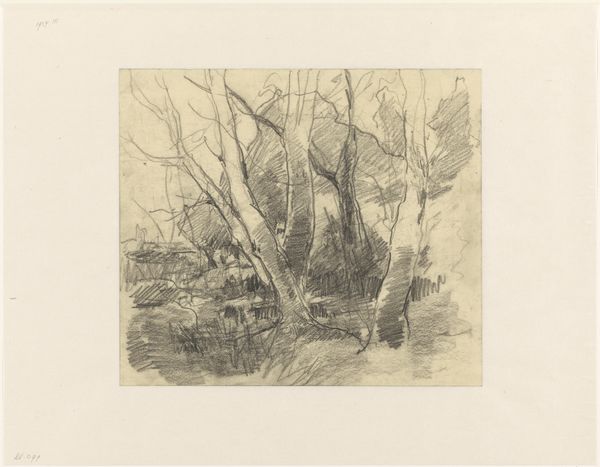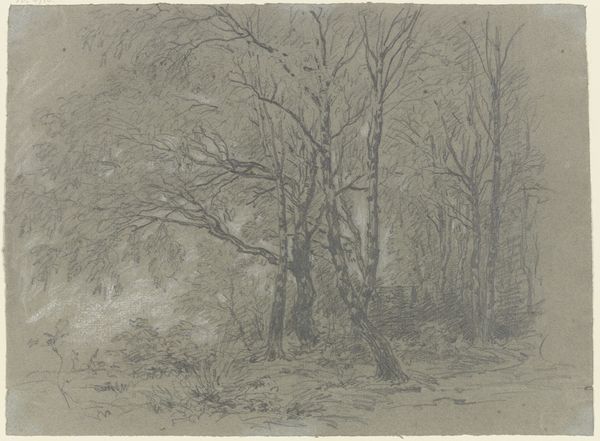
drawing, pencil
#
drawing
#
landscape
#
etching
#
forest
#
pencil
#
realism
Dimensions: height 307 mm, width 470 mm
Copyright: Rijks Museum: Open Domain
Curator: Look at this arresting scene, rendered by Egbert Rubertus Derk Schaap sometime between 1872 and 1939. It's entitled "Boslandschap," a woodland landscape primarily composed using pencil and etching. Editor: My immediate impression is of starkness, a kind of muted rawness. The trees, particularly the central one, are drawn with such emphatic lines, there’s a feeling of quiet endurance here, yet something vulnerable too. Curator: That’s interesting. Thinking about the period when this work could have been created, what was happening with representations of nature? Did the rising industrialization inspire Romanticism? Was this created during the world wars by someone grappling with those immense global issues? There may be tension between our desire for an Edenic past and the brutal reality of modernity. Editor: Yes, there is something beyond simply nature, as the artist seems intent on drawing a certain emotional symbolism out of these trees. I see the stoicism of the elder tree and think of it in relation to similar totemic images in art, even linking it to the cultural concept of a 'tree of life.' The way it towers feels laden with significance, of perhaps witnessing history unfold. Curator: The absence of any figures within the landscape contributes to that. The trees become stand-ins for humanity, silently watching, weathered by the passage of time and systemic challenges. Schaap uses nature not as a backdrop but as an active character in societal dynamics. Editor: And look at the subtle textures achieved with etching and pencil, too; almost creating layers of lived history on the page. Do you think it evokes the transience of memory, or is it a conscious preservation of it? The medium really gives it emotional heft. Curator: That speaks to the intersection between memory, trauma, and representation that I consider to be important. The work allows a discussion about identity, place, and historical experience – how are our ideas and experiences represented within this image of a forest? Editor: It’s interesting how our viewpoints, though rooted in different approaches, have allowed us to see an aspect of what seems to have a broader, deeply considered perspective in its symbols. Curator: Absolutely, that interplay enriches the discussion and opens space for us to examine the history and continuing relevance this holds for us today.
Comments
No comments
Be the first to comment and join the conversation on the ultimate creative platform.
